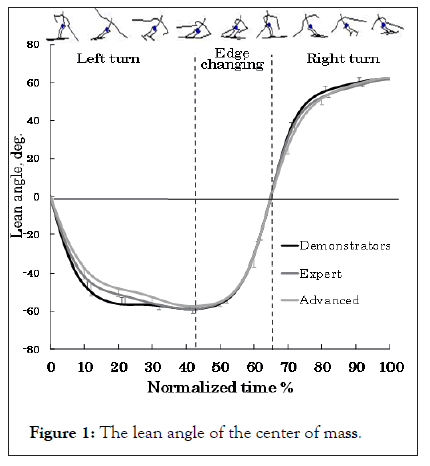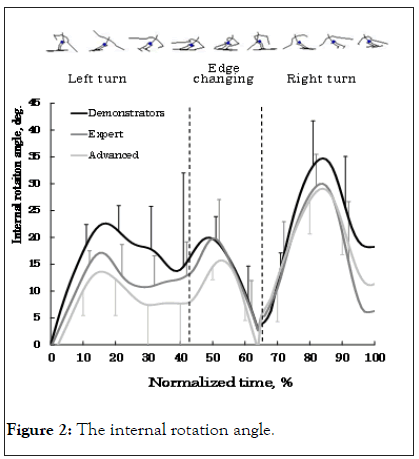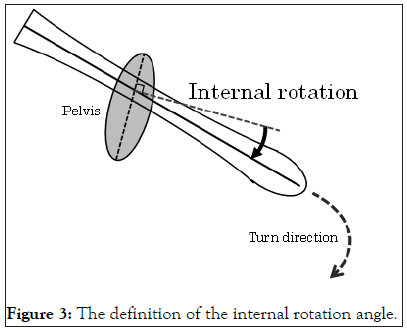International Journal of Physical Medicine & Rehabilitation
Open Access
ISSN: 2329-9096
ISSN: 2329-9096
Short Communication - (2022)Volume 10, Issue 2
Japan is one of the areas with heavy snowfall in the world. Therefore, many skiers and ski athletes are able to enjoy and obsessed with skiing. Japanese athletes of Ski jumping, Nordic combined and moguls do well in the ski world cup and the winter Olympic Games, but it is alpine ski that is the most popular in Japan. Japan has a unique alpine ski competition, the ski technical championship, which is called in Japanese “Gijyutusen”. This competition has been held since 1964. Skiers of wider generations from late teens to forties are enjoying it as their lifelong sports.
They don’t do the hard training because most of them are an amateur. The competition is a means of the health maintenance of their mind and body. On the other hand, some professional skiers do the strength training during the summer season. They have been doing the alpine ski race and keeping the physical training. And they do the mental imagery training as can been seen in the start area of alpine ski race. It has been said that psychological competitive ability of the elite “Gijyutusen” skiers is superior as the other sports [1].
The competitors use alpine skis for giant slalom skis and slalom skis. Therefore a few skiers get injury of their knee, hip and shoulder as the athletes of the alpine ski races.
To solve this problem, our research group has investigated the movements of twelve Japanese skiers, including major ski demonstrators, expert skiers and advanced skiers. They performed a long radius turn on steep courses, and their motions were filmed with three cameras (60 Hz), two panned and a panned and tilted. To obtain the 3-dimensional space coordinates, we adopted a Panning DLT method [2] and examined the skier’s and their skis movements by 3D analysis.
Figure 1 is the lean angle of the Center of Mass (CM) in long radius turn of three groups. The figure shows that the demonstrator makes the lean angles more rapidly than the others. Figure 2 is the internal rotation angle of the same long turn [3]. The internal rotation angle is the angle between the ski longitudinal axis and pelvis (Figure 3).

Figure 1: The lean angle of the center of mass.

Figure 2: The internal rotation angle.

Figure 3: The definition of the internal rotation angle.
The internal rotation angle of demonstrators is bigger than others at the beginning of the turn phase. This angle makes the attack angle which is theangle between the ski longitudinal axis and the velocity of the center point of ski. It causes the resistance force from the surface of the snow. That force enables the skier to get the centripetal force and then the skier to make the lean angles to turn at the beginning of the turn phase.
Moreover, we investigated the relationship between subjective human parameters of 3-dimensional analysis [4]. Seventeen Japanese skiers performed long radius turns and were filmed with two cameras (60 Hz), panned and fixed. These runs were scored out of a maximum of 100 points by three human referees. Through correlation analysis between the referees’ scores and the parameters obtained using 3D motion analysis. We found significant correlations between the scores and the following four parameters:
Radius of curvature at the turn maximum (r=-0.840, p<0.001),
The lean angle of the Center of Mass (CM) at the turn maximum (r=0.628, p<0.01),
The angle formed by CM velocity and the fall line at the point where the lean angle of CM was vertical to the slope (the onset of turning) (r=0.816, p<0.001)
The lean angular velocity of CM at the onset of turning(r=0.546, p<0.05). This study suggests three characteristics of superior ski technique: A sharp and wide turn made by gaining centripetal force, a large lean angle of the body and a rapid edge changing.
The rehabilitation process includes the following steps in order to overcome the injuries sustained while skiing and to proceed with their athlete life.
Generate the proper team
When it comes to sports injury rehabilitation, this is especially important for the younger athletes, but it can make a significant difference for any skier. Athlete team should consist of the team's surgeon or physical therapist, a family member (or parents if the athlete is a child), and the athlete. The primary goal of this team is to ensure that all of them keep the athlete motivated and focused.
Network of knowledge
Don't be hesitating to seek advice from others. Sports injury rehabilitation education is a powerful tool. Talk to other athletes, friends, physical therapists, and so on, and find out what has worked for them in the past. Because no two athletes are alike, the more information you can gather from other athletes.
Determination Though Athletes are naturally active people, Injury may prevent them from being as active as they are actually, which can be frustrating both physically and mentally. Depending on the severity of the injury, recovery period for any kind of sports-related injuries rehabilitation could take months.
Trust
Trust is essential not only between the trainer and the athlete, but the athlete must also be able to have self-trust. This might get altered when the athlete got injury. It is essential that the trainee encourage athlete to stay strong and to have faith in the sports injury rehabilitation process.
These studies tell us what the superior skiing techniques are with regard to the original ski technical championship in Japan. However, we don’t have much scientific knowledge of skiing movements and Japan is still behind in the coaching and instruction of skiing. We have to keep studying to contribute to those fields.
[CrossRef]
[CrossRef]
Citation: Yoshida Y (2022) The Superior Skiing Techniques and the Rehabilitation Process Involved for Injuries to the Japan Skiing Athletes. Int J Phys Med Rehabil. 10:622.
Received: 10-Jan-2022, Manuscript No. JPMR-22-15839; Editor assigned: 13-Jan-2022, Pre QC No. JPMR-22- 15839 (PQ); Reviewed: 27-Jan-2022, QC No. JPMR-22-15839; Revised: 31-Jan-2022, Manuscript No. JPMR-22- 15839(R); Published: 07-Feb-2022 , DOI: 10.35248/2329-9096-22.10.622
Copyright: © 2022 Yoshida Y. This is an open-access article distributed under the terms of the Creative Commons Attribution License, which permits unrestricted use, distribution, and reproduction in any medium, provided the original author and source are credited.